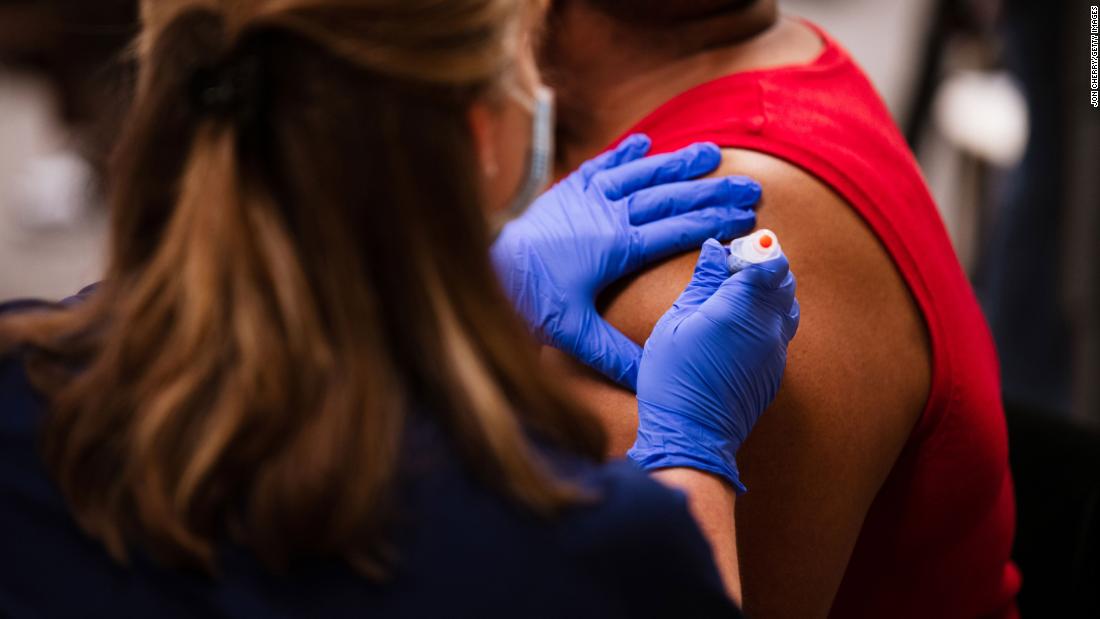Millions of doses of vaccines could be added to the pipeline in the coming months, perhaps easing the grip Americans felt as vaccines began to be released slowly.
Janssen, vaccine arm of Johnson & Johnson, plans to have the results of its final stage clinical tests ready to be evaluated by the U.S. Food and Drug Administration within weeks.
“Johnson & Johnson is just around the corner … just around the corner means they are probably a few weeks away from getting the data analyzed, for the FDA to assess whether or not we are in a situation where it could move on and start thinking about getting it out to the public, “Dr. Anthony Fauci, director of the National Institute of Allergy and Infectious Diseases, told CNN’s Chris Cuomo on Thursday.
In the United States, there are three pioneers.
Johnson & Johnson
Johnson & Johnson is most likely to seek FDA emergency use authorization.
Many experts say the J&J Covid-19 vaccine has several advantages. While J&J is conducting a separate test to test its vaccine using two doses, as Moderna and Pfizer do, the current test uses only one dose.
A single one means that more people could be vaccinated, since none would need to be separated to give someone a second injection. This would be a great advantage at a time when vaccines are difficult to find.
The other advantage of J&J is that it can be stored at normal refrigerator temperatures, unlike the Pfizer vaccine, which needs special freezers.
Schaffner said adding a vaccine like this “would really speed up” vaccination efforts in the U.S. as well.
“In other words, we could get the vaccine to people,” said Schaffner, “instead of getting people to vaccines.”
The Johnson & Johnson Covid-19 vaccine was made in collaboration with the vaccine division of J&J based in Belgium, Janssen Pharmaceutical and Beth Israel Deaconess Medical Center. This is known as a non-replicating viral vector vaccine, using a common cold virus called adenovirus 26.
Scientists created this vaccine by taking a small amount of genetic material that encodes a piece of the new coronavirus and integrates it with a weakened version of adenovirus 26. J&J scientists have altered this adenovirus so that it can enter cells, but it does not replicate and makes people sick. AstraZeneca uses a similar platform, but its adenovirus comes from a chimpanzee.
The adenovirus carries the genetic material from the coronavirus to human cells, inducing them to make pieces of the coronavirus spike protein – the part it uses to bind to cells. The immune system then reacts against these pieces of the coronavirus.
“So you are not being infected with the virus that Covid-19 can deliver when you receive this vaccine. It just contains some of the harmless Covid virus proteins on its surface,” explained Schaffner. “Basically, it is a sheep disguised as a wolf and, when your immune system sees it, it responds to it and creates protection against it and, in the future, against the real virus that causes Covid-19.”
“In the case of the Moderna and Pfizer vaccine, you’re just giving the gene in a lipid nanoparticle or a drop of fat,” said Offit. “In the case of J&J, you are giving the gene into a virus that cannot reproduce.”
The technology used in the Covid-19 vaccine worked with Janssen’s Ebola vaccine.
AstraZeneca
The AstraZeneca vaccine is also a vector vaccine. Like the Johnson & Johnson vaccine, it employs an adenovirus to carry genetic instructions for making coronavirus spike protein in cells to generate antibodies. The AstraZeneca vaccine, developed with the University of Oxford, uses a virus that infects chimpanzees, but does not make people sick.
As with the Pfizer and Moderna vaccines, this Covid-19 vaccine would require two injections.
The AstraZeneca vaccine could potentially go up for authorization around the end of March.
Novavax
The Novavax candidate is a protein-based vaccine created from the genetic sequence of the new coronavirus.
The company uses virus-like nanoparticles as a base and scientists cover the base with the genetically modified pieces of the coronavirus spike protein.
This vaccine is administered in two doses, 21 days apart.
This type of vaccine has been used successfully in other diseases, such as the HPV vaccine and the Sanofi flu vaccine.
